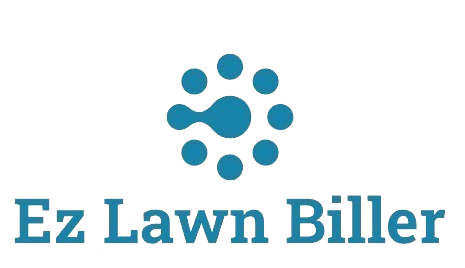Optimize Routes: Best Practices for Lawn Care Pros
Optimizing routes is an essential aspect of running a successful lawn care business. With the rising demand for efficient and timely services, lawn care professionals must adopt the best practices that ensure their operations run smoothly while maximizing profitability. This blog post will delve into the various strategies that can be employed to optimize routes for lawn care, including the use of technology, effective planning techniques, and best practices that can lead to significant improvements in service delivery.
In today’s competitive landscape, lawn care pros are grappling with the challenge of meeting customer expectations while managing the complexities of scheduling and routing. The relevance of optimizing routes cannot be overstated, as it impacts not only the efficiency of operations but also the satisfaction of clients. This article will cover key aspects of route optimization, including planning routes effectively, leveraging technology, and implementing best practices that can lead to enhanced service efficiency.
We’ll explore how integrating tools like lawn billing software can further streamline operations, and ultimately, transform the way lawn care professionals manage their business. By the end of this article, you will have a well-rounded understanding of route optimization and actionable insights that can elevate your lawn care service.
Understanding Route Optimization in Lawn Care
Route optimization involves strategically planning the most efficient paths for service delivery in lawn care. This not only minimizes fuel and labor costs, but also enhances productivity. A well-optimized route can significantly reduce travel time between jobs, allowing lawn care professionals to take on more clients, thus increasing revenue.
Research shows that companies that optimize their routes can reduce travel time by up to 30%. This is particularly vital for lawn care businesses, where timely service is a key factor in customer satisfaction. Effective route planning ensures that professionals can stick to their schedules, leading to happier clients and more reliable service.
For instance, when a lawn care provider plans their services in a way that clusters jobs in the same geographic area, they can cut down on unnecessary driving. By utilizing tools like a lawn service app, lawn care pros can efficiently map out their daily routes, ensuring that they prioritize jobs based on proximity and time.
Leverage Technology for Efficient Route Planning
Incorporating technology into route optimization can dramatically improve efficiency for lawn care businesses. Utilizing lawn service software can provide comprehensive insights into the best routes, allowing for real-time adjustments based on traffic, weather conditions, and unforeseen delays.
Many lawn service apps come equipped with GPS features, which can help professionals track their vehicles, monitor routes, and make necessary changes on the fly. Some software also offers predictive analytics to forecast busy periods based on historical data, enabling lawn care providers to plan their schedules proactively.
Additionally, having a centralized platform to manage client details, service history, and payment preferences can simplify operations. This integration allows lawn care pros to focus on providing excellent service rather than getting bogged down in administrative tasks. For instance, a comprehensive lawn company computer program can streamline invoicing, track services performed, and facilitate communication with clients—all while optimizing routes.
Efficient Scheduling: The Backbone of Route Optimization
Effective scheduling is crucial for ensuring that lawn care professionals can maximize their routes. Scheduling jobs based on geographic proximity not only saves time but also reduces fuel costs. Implementing a systematic approach to scheduling can greatly enhance service delivery.
For example, if a lawn care company has multiple clients in the same neighborhood, scheduling all those jobs on the same day will minimize travel time. This practice helps create a more predictable routine and allows lawn care pros to allocate resources more effectively.
Another aspect of scheduling is balancing the workload throughout the week. An uneven distribution of jobs can lead to overworking on certain days while leaving others underutilized. By employing service company software, lawn care providers can analyze their schedules and adjust job lists accordingly to maintain an even flow of work.
Implementing Best Practices for Route Optimization
In addition to utilizing technology and effective scheduling, there are several best practices that lawn care professionals should adopt for optimal route management. Firstly, regularly maintain your fleet of vehicles. Well-maintained vehicles are crucial for minimizing breakdowns and maximizing efficiency.
Secondly, consider investing in training for employees on the best practices for route optimization. Ensuring that every team member understands the importance of efficient routing can foster a culture of productivity and responsibility.
Lastly, always seek feedback from clients. Understanding client needs and preferences can help lawn care professionals tailor their services, leading to improved customer satisfaction and loyalty. Engaging with clients can also provide insights into how routes can be optimized based on their unique requirements.
Utilizing Data for Continuous Improvement
An often-overlooked aspect of route optimization is the importance of data. Lawn care businesses should analyze their service data regularly to identify trends and areas for improvement. This may include reviewing service completion times, travel distances, and customer feedback.
Data analytics can reveal inefficiencies in current routing practices and help professionals make informed decisions moving forward. For instance, if a certain route consistently results in delays, it may be worthwhile to explore alternative paths or scheduling strategies.
Incorporating reporting features available in lawn billing software can also provide valuable insights into operational performance. By utilizing these data-driven approaches, lawn care pros can continuously refine their route optimization strategies and adapt to changing circumstances.
Case Studies: Successful Route Optimization in Lawn Care
Examining real-world examples can provide valuable insights into effective route optimization strategies. Several lawn care companies have successfully implemented technological solutions and best practices that have transformed their operations.
One notable example is a regional lawn care business that adopted a lawn service app to manage their routes. By leveraging GPS technology, they were able to reduce their average travel time by 25%, resulting in significant fuel savings and increased job capacity. This not only improved their bottom line but also enhanced customer satisfaction, as they were able to offer more timely service.
Another case involves a lawn company that utilized a lawn company app to streamline their scheduling process. By analyzing service data and client feedback, they were able to identify peak service times and adjust their schedules accordingly. This proactive approach not only optimized routes but also minimized the likelihood of overbooking, which can lead to unhappy clients.
Future Trends in Lawn Care Routing
As technology continues to advance, the future of route optimization in lawn care looks promising. Innovations such as AI-driven route planning and predictive analytics are set to revolutionize how lawn care professionals manage their operations.
New developments in mobile technology will also facilitate real-time communication between lawn care providers and clients. Enhanced connectivity can lead to improved scheduling flexibility and service responsiveness, resulting in better customer experiences.
Moreover, as more companies adopt eco-friendly practices, optimizing routes may also involve considerations related to sustainability. Efficient routing not only saves time and money but also reduces carbon footprints, aligning with the growing demand for environmentally responsible service practices.
Conclusion
Optimizing routes is a critical component of running a successful lawn care business. By understanding the significance of efficient routing, leveraging technology, implementing best practices, and utilizing data for continuous improvement, lawn care professionals can enhance their service delivery, maximize profitability, and improve customer satisfaction.
The integration of tools such as lawn billing software can further streamline operations, allowing businesses to focus on providing exceptional lawn care services. As the industry evolves, staying ahead of the curve with advanced routing techniques will be key to maintaining a competitive edge.
So, take the next step to optimize your routes today and transform your lawn care business into a more efficient and profitable operation. With the right strategies and tools at your disposal, the sky is the limit!




